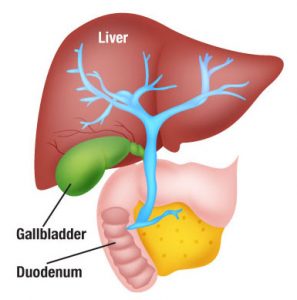Gallbladder cancer is cancer that begins in the gallbladder. Your gallbladder is a small, pear-shaped organ on the right side of your abdomen, just beneath your liver. The gallbladder stores bile, a digestive fluid produced by your liver.

Gallbladder cancer is uncommon. When gallbladder cancer is discovered at its earliest stages, the chance for a cure is very good. But most gallbladder cancers are discovered at a late stage, when the prognosis is often very poor. Gallbladder cancer is difficult to diagnose because it often causes no specific signs or symptoms. Also, the relatively hidden nature of the gallbladder makes it easier for gallbladder cancer to grow without being detected. The chances of survival for patients with gallbladder cancer depend to a large extent on how advanced it is when it’s found.
The American Cancer Society’s estimates for cancer of the gallbladder and nearby large bile ducts in the United States for 2019 are:
- About 12,360 new cases diagnosed: 5,810 in men and 6,550 in women
- About 3,960 deaths from these cancers: 1,610 in men and 2,350 in women
Signs & Symptoms
Gallbladder cancer signs and symptoms may include:
- Abdominal pain, particularly in the upper right portion of the abdomen
- Abdominal bloating
- Fever
- Losing weight without trying
- Nausea
- Yellowing of the skin and whites of the eyes (jaundice)
Causes
It’s not clear what causes gallbladder cancer.
Doctors know that gallbladder cancer forms when healthy gallbladder cells develop changes (mutations) in their DNA. These mutations cause cells to grow out of control and to continue living when other cells would normally die. The accumulating cells form a tumor that can grow beyond the gallbladder and spread to other areas of the body.
Most gallbladder cancer begins in the glandular cells that line the inner surface of the gallbladder. Gallbladder cancer that begins in this type of cell is called adenocarcinoma. This term refers to the way the cancer cells appear when examined under a microscope.